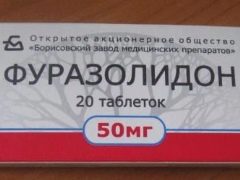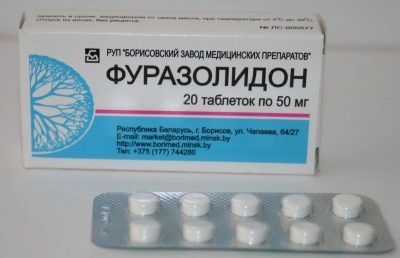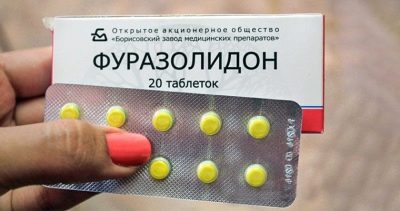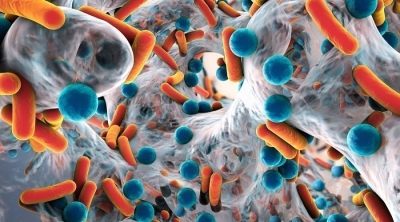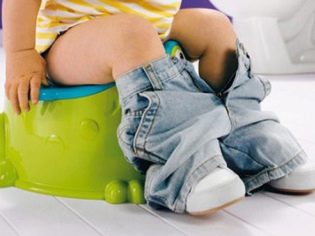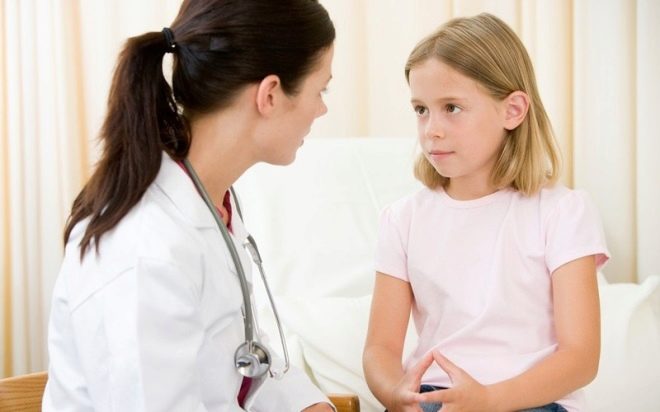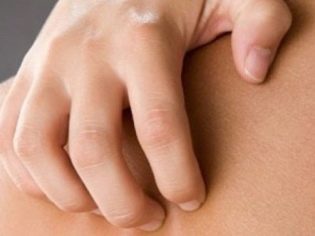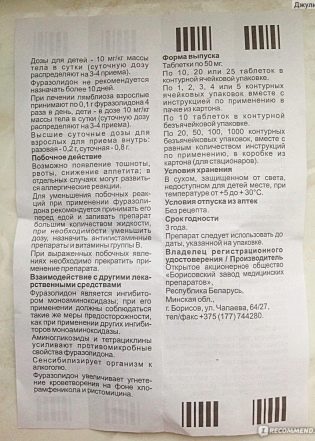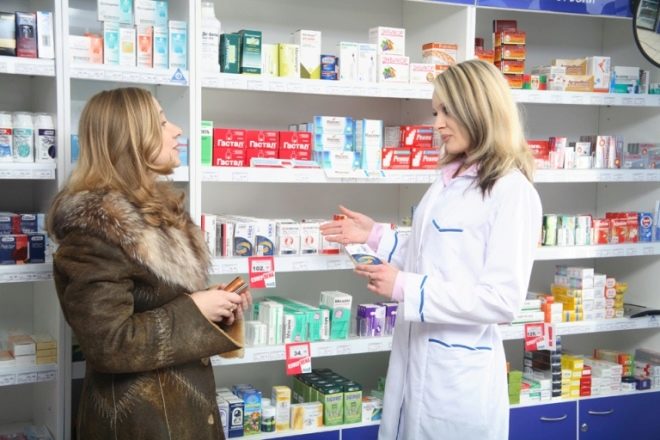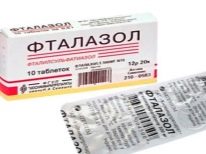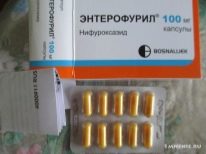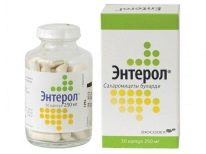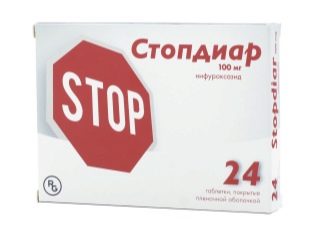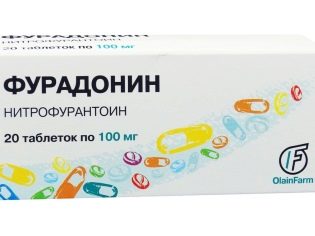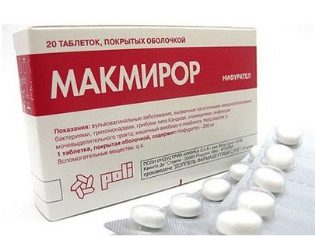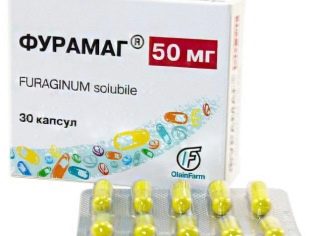Furazolidone for children: instructions for use
Both intestinal infection and poisoning with spoiled foods are common in both adults and toddlers. To cope with such problems, in many cases it is enough to give the patient a lot of drinking (including special rehydration solutions that quickly restore the balance of fluid and minerals) and follow a certain diet.
But sometimes you have to resort to antimicrobial drugs, one of which is "Furazolidone". This drug acts on the most common cause of diarrhea, vomiting, and other symptoms of gastrointestinal diseases - pathogenic microbes. It has been used for many years, but when prescribing a child, mothers should, before starting therapy, learn about all the features of using such a medicine.
Release form
Furazolidone is produced by several pharmaceutical companies both in Russia and in neighboring countries. This medicine is sold in small pills in a rounded yellow color, sometimes with an unexpressed green tint. Most often, one pack includes 10 or 20 such tablets, but in the assortment of some manufacturers there are packs with 30, 50, or more tablets. In powder, syrup, granules, capsules and other forms, "Furazolidone" is not produced.
Composition
Each tablet contains 50 mg of active substance, which is also called furazolidone. Auxiliary components from different manufacturers are different and are represented by potato starch, aerosil, sucrose, polysorbate, lactose and other substances.
If the child has an allergy to the listed compounds, their list should be clarified in the abstract before starting treatment.
Mechanism of action
Furazolidone has an antimicrobial effect on a fairly large number of pathogens, including shigella, Giardia, Trichomonas, Salmonella, Klebsiella and Staphylococcus. This substance from the group of nitrofurans affects cellular respiration and other processes inside bacterial cells, because of which their membrane is destroyed.
In addition, after exposure to furazolidone, microbes emit less toxic substances, which quickly improves the patient's condition in the first days of taking the pills. At the same time, the child’s immune system does not suffer, which distinguishes “Furazolidone” from many other antimicrobial drugs prescribed for intestinal infections. In addition, resistance to the active component of such pills develops very slowly.
Indications
"Furazolidone" is usually prescribed to patients who have been diagnosed with an infection of the gastrointestinal tract, manifested by diarrhea, flatulence, abdominal discomfort, nausea, and other unpleasant symptoms. The drug is used in the treatment of such dangerous diseases for children as dysentery, paratyphoid fever and typhoid fever. It is prescribed for foodborne diseases.
Due to the antiprotozoal action, the pill is also often used for giardiasis. They may also be prescribed for rotavirus infection in order to prevent complications of such a disease. In addition, "Furazolidone" helps to cope with diseases of the urinary organs of an infectious nature, so it is sometimes prescribed for pyelonephritis, urethritis or cystitis.
How old is allowed?
The active substance of the tablets is contraindicated in newborn babies, but can be used in young patients older than 1 month as prescribed by a doctor. In the annotation to the tablets, some manufacturers note the age of 1 year in contraindications, others - three years of age. This is usually due to the solid form of the drug and the inconvenience of splitting the tablet into smaller pieces.
In any case, the child should be given “Furazolidone” only after going to a doctor.
Contraindications
The drug is not prescribed to children with hypersensitivity to furazolidone or any inactive ingredient of the tablets, as well as a lack of glucose-6-phosphatase. In case of a severe degree of kidney failure, the drug is contraindicated, and for any kidney diseases affecting the work of this organ, giving "Furazolidone" is permissible only under the supervision of a physician.
If, in addition to diarrhea and other symptoms of indigestion, the child has severe abdominal pain, the use of "Furazolidone" before the examination by a specialist is prohibited. Such symptoms may indicate a surgical pathology (for example, appendicitis), in which self-medication can only harm.
Side effects
When prescribing "Furazolidone" to a child, parents are often interested in how safe this drug is for a growing body. In fact, side effects while taking these pills are rare. Among them are various allergic reactions, such as a rash on the skin or redness with itching. Also, some children may have a worse appetite or nausea after taking Furazolidone.
If side effects occur, it is recommended to consult a doctor, who may cancel the medication or reduce its dose.
Instructions for use
The daily dosage of "Furazolidone" is calculated depending on how much a small patient weighs. The doctor multiplies the number 10 by the weight of the child in kilograms and receives the number of milligrams of active substance that you need to give the baby per day. Then the result is divided into 3 or 4 doses during the day (they should be with meals). The child should swallow the pill with water.
The duration of use of the drug depends on the disease. Most often, "Furazolidone" is taken a course of 5 to 10 days. The use of drugs for more than ten days is not recommended.
If after 2 days from the beginning of the use of tablets, no improvement is observed, a second consultation with a doctor is necessary.
Overdose
"Furazolidone" in a high dose is a danger to the health of children, as it can provoke complications of the disease, which the patient already has, and some other pathologies, including polyneuritis and hepatitis. If you suspect an overdose of medication, you should immediately stop taking the pills further, give the patient plenty of fluids and drugs prescribed by the doctor for symptomatic treatment, such as B vitamins or antihistamines.
Interaction with other drugs
"Furazolidone" is not used together with some other drugs, among which are called preparations of ephedrine and phenylephrine, containing ethanol and other drugs. If the child is already receiving some kind of treatment, then you need to talk about medication compatibility with your doctor before you start taking pills.
Terms of sale
To buy the drug in a pharmacy, you do not need to take a prescription from a doctor, but consultation before the child's treatment with furazolidone is desirable. The price of the drug depends on the manufacturer and the number of tablets in the pack. In this case, the tool is inexpensive and costs from 60 to 120 rubles.
Storage
At home, “Furazolidone” should be in a dry place, where the rays of the sun and high temperature will not act on the tablets (the medicine should be stored at a temperature of +5 to +30 degrees). In addition, such a place should be inaccessible to kids. The shelf life of the drug is usually 3 years from the date of manufacture and is indicated on the box or blister.The suitability of the medicine must be clarified before you start giving the pills to the child.
Reviews
On the use of "Furazolidone" you can read a lot of positive reviews, in which patients and their parents confirm the effectiveness of such tablets and mark their rather quick action. The advantages of the drug also include its availability in pharmacies, low cost and small pill size.
As for the minuses, some children have side effects. The downside is the fact that it is quite difficult to divide the drug into parts.
Analogs
If there is a need to replace "Furazolidone" with another medicine (for example, if it is absent from the pharmacy or the child is allergic to any of its components), the doctor will prescribe a medicine with a similar therapeutic effect on the body.
Depending on the disease, it may be a number of drugs.
- «Enterofuril». Such a popular remedy for diarrhea contains nifuroxazide, which destroys pathogenic microbes in the intestine, so the drug is used in the infection with salmonella, E. coli, staphylococcus and other bacteria, as well as rotavirus. Children are most often given it in liquid form (this is a sweet banana suspension), because such “Enterofuril” is allowed from one month. In capsules, this medicine is used from the age of three.
- «Phthalazole». This means can be replaced by "Furazolidone" for bacterial diarrhea. Its main advantage is the possibility of use at any age. The drug is represented by tablets that act mainly in the intestines and are not addictive. For the smallest patients, it is recommended to crush them into powder and stir in a spoonful of water.
- «Enterol». This drug is available in capsules and powder bags. Microscopic fungi contained in it have antidiarrheal activity, therefore the main indication for the use of Enterol is diarrhea caused by various causes (microbes, rotavirus, dysbiosis, spoiled or unusual food, etc.). Both types of medicine are allowed to give children from 1 year.
- «Furadonin». This drug can be similar to "Furazolidone" in the inflammatory process in the excretory system, as it is used in the treatment of bacterial cystitis, nephritis, urethritis and other diseases of the urinary organs. The action of such tablets is due to nitrofurantoin. The drug is allowed from 1 month, but in children under 3 years of age is used with caution.
- «Stopdiar». The action of such a drug, like “EnterofurilProvides nifuroxazide. The drug is available in capsules, suspensions and tablets. For children, he is appointed over the age of one month.
- «Macmiror». The basis of these pills is nifuratel - an antimicrobial substance that helps get rid of Giardia, amebiasis and other intestinal infections. In addition, "McMiror" is discharged and with infection of the urinary tract. It can be used at any age.
- «Furamag». Such capsules containing furazidin are used for urethritis, cystitis and pyelitis, as well as in the treatment of skin infections. They can be prescribed to young patients who have already turned 3 years old.
About when a child’s diarrhea should consult a doctor, you will find out in the next video.
